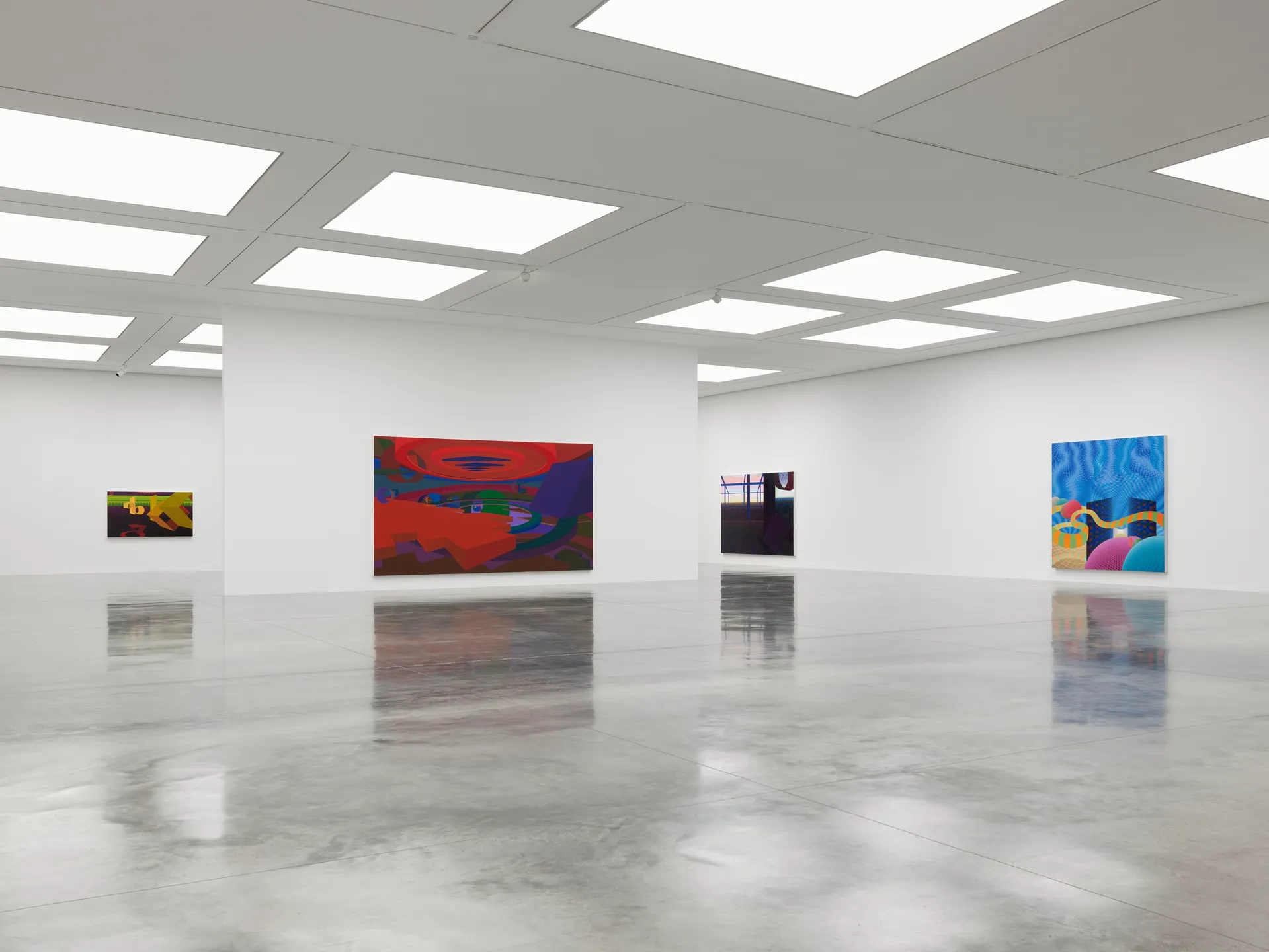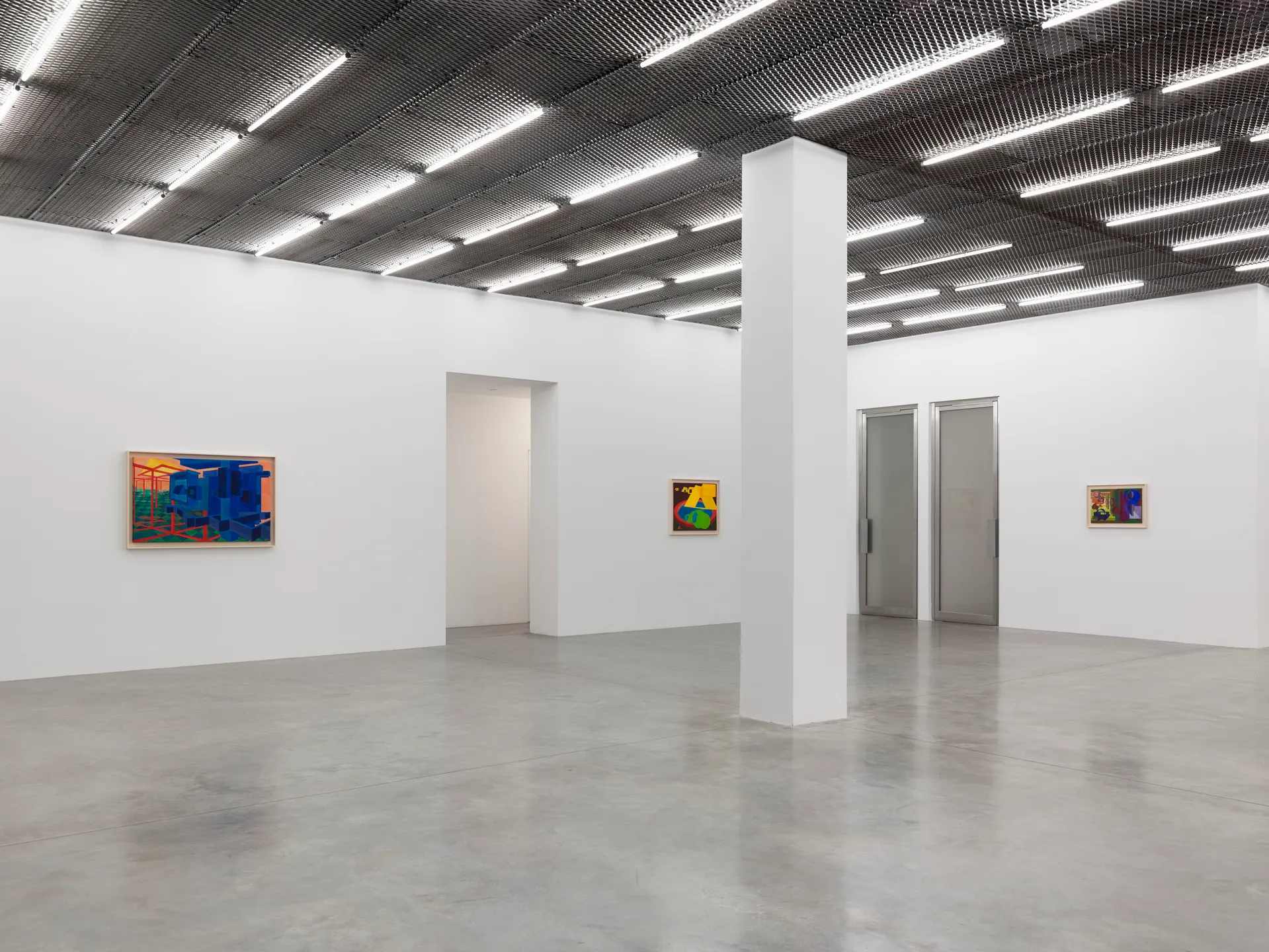AL HELD: ABOUT SPACE
White Cube is pleased to present the exhibition About Space. The selection reveals the extent to which Held realised novel modes of form, space and colour, navigating spatial complexity through a combination of hard-edged geometry and spontaneous gestural expression
June 27 - September 1, 2024
In the late 1940s, Held availed himself of the GI Bill to pursue his artistic studies, first enrolling at the Art Students League in New York then venturing to Paris to study at the Académie de la Grande Chaumière. He returned to New York in 1953 to a city in the thrall of Abstract Expressionism, encountering first-hand the impact effected by artists such as Franz Kline and Jackson Pollock.
Following his paint-laden ‘Pigment’ works, the ‘Taxi Cabs’ marked a pivotal moment in the artist’s practice, the shift from oil paint to the faster-drying polymer-based acrylic affording Held the freedom to repaint his canvases several times over. In the expansive 23-foot-wide Taxi Cab IV (1959), displayed in South Gallery I, rudimentary geometric configurations emerge through Held’s broad-brushed handling of his medium.
The artist’s ‘urge for specificity’ soon evolved into the ‘Alphabet Paintings’ (1961–67), a series of mural-sized works in which Held isolated letters of the Roman alphabet, delineating them with serrated edges of colour. In paintings such as I Beam (1961), Held harnesses the typographic and pictorial quality of the letters to probe and concretise form, looking beyond their signifying function in order to eliminate a reading of the work.
Eschewing colour, works such as Esopus I (1969) and Black Nile VII (1974) are structured around the cubic volumes of elemental shapes. Delineating the geometries of squares, circles and triangles with bold, interpenetrating lines that extend beyond the image-field, Held displaces the parameters of cubic dimension to introduce unmoored and paradoxical perspectives.
Displayed in the North Galleries, five seminal works from Held’s ‘Return to Colour’ series (1978–84) manifest matrixed configurations of ‘gravity-less’ geometric forms and interlocking trellised beams. Within groundless fields of colour, Held here introduces a deepened sense of space through the interplay of light and shadow and compositions with architectural dimension – all of which laid the foundation for the artist’s subsequent and perhaps most ambitious series.
Challenging Euclidean principles of geometry, the ‘Luminous Constructs’ emerge as multiversal successors to Piranesi’s semi-illusionistic landscapes. Drawing also from Renaissance art in their use of narrative and perspective, Held expanded the field of the viewer through the compression of volumetric space. On the precipice of 21st-century technological progress, working in parallel to early concepts of virtual reality that have now become ubiquitous, Held’s late works optimistically gesture towards the future.


